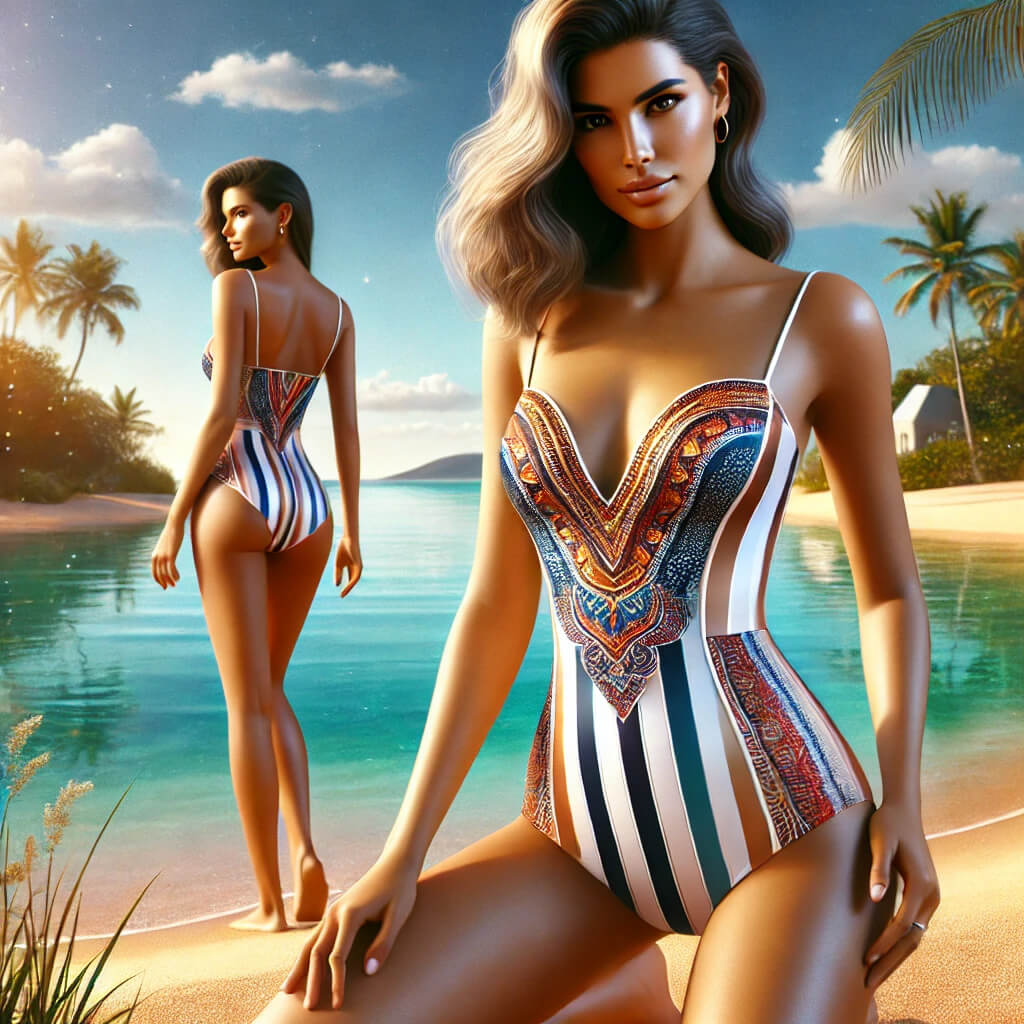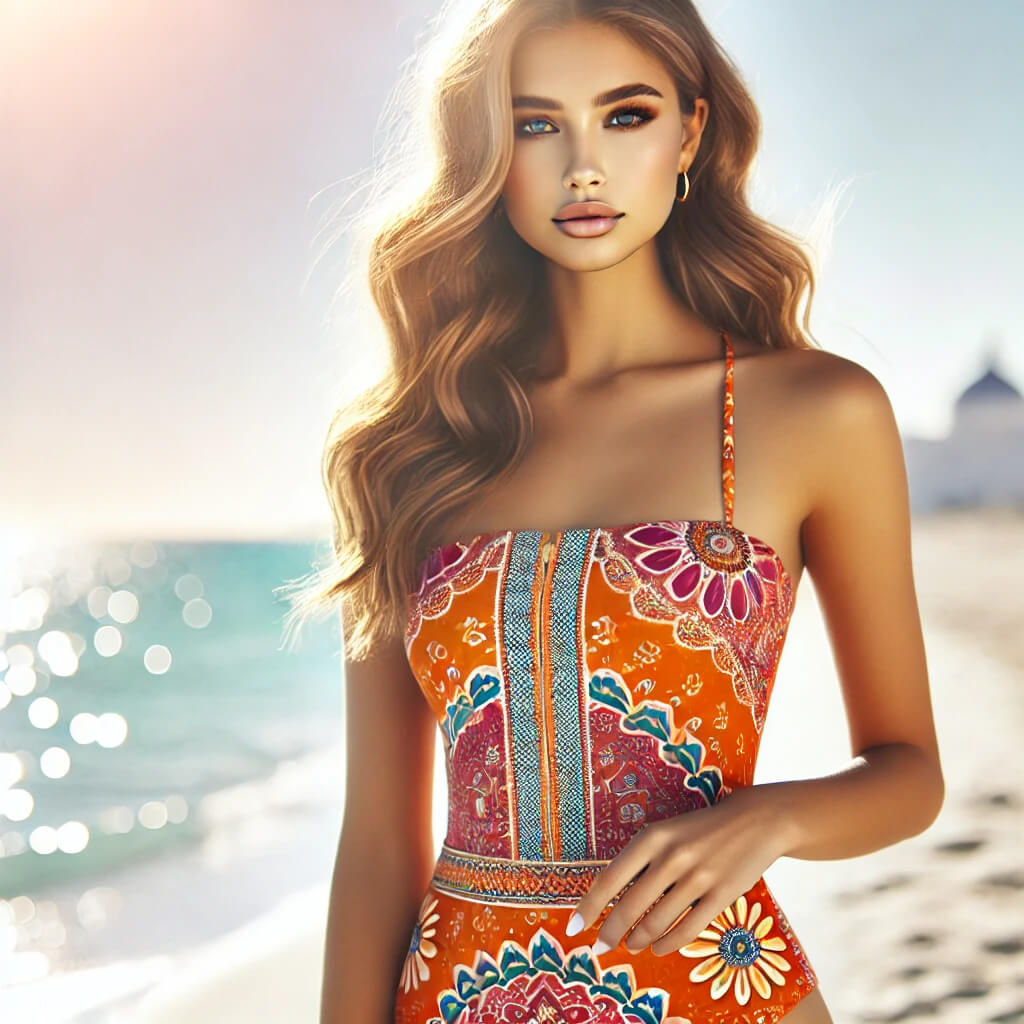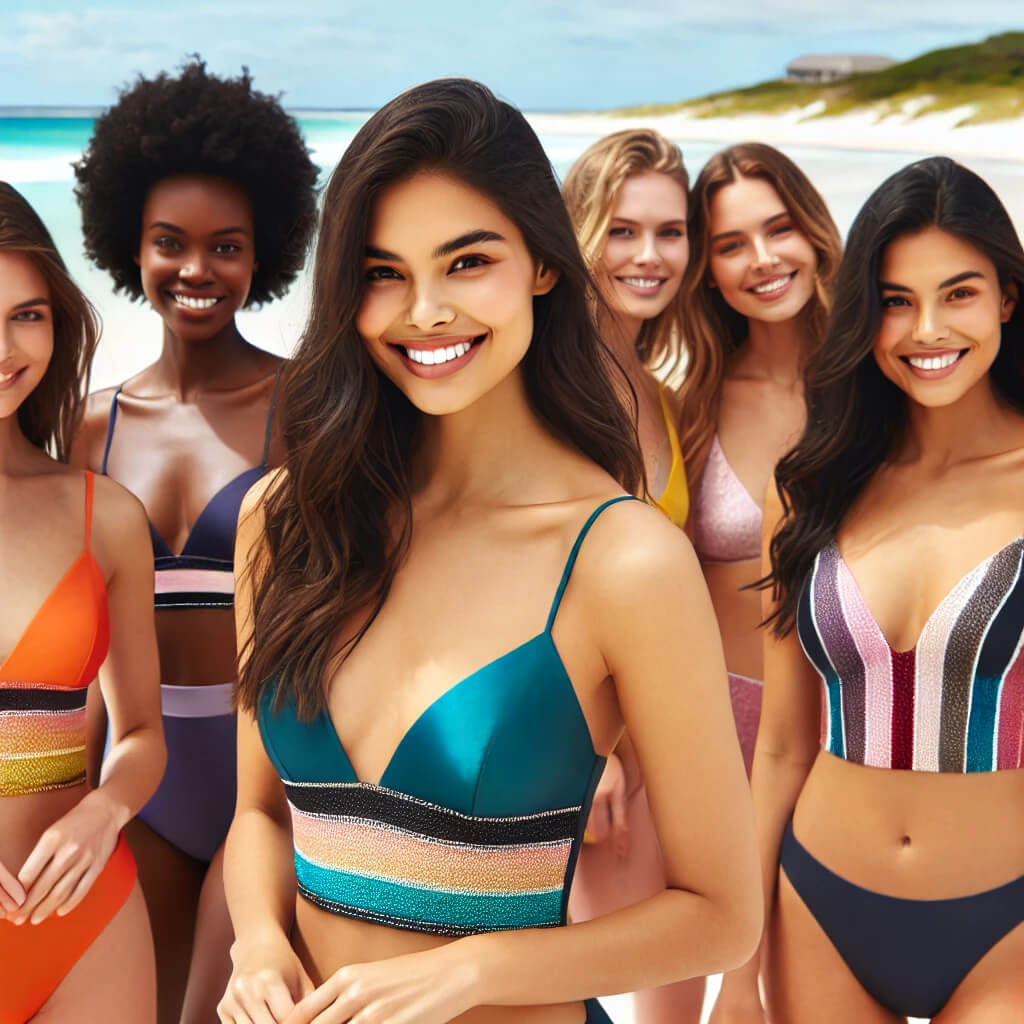Choosing the right swimwear for women goes beyond just picking a fashionable design; it’s about finding the perfect balance between comfort, confidence, and individuality. Whether you’re heading to a beach vacation, attending a poolside gathering, or engaging in water sports, the right swimwear empowers you to feel your best. In this guide, we explore the evolution of swimwear, the various styles available, expert tips for selection, emerging trends, and the rising importance of sustainability in swimwear design. By the end of this guide, you’ll be equipped to make informed choices and enjoy a seamless swimwear experience.
Key Takeaways
- The right swimwear should complement your body type, match the occasion, and ensure comfort.
- Modern swimwear emphasizes a blend of functionality, style, and eco-consciousness.
- From bikinis to monokinis, learn about different styles, maintenance tips, and top sustainable brands.
Part 1: Understanding Swimwear for Women
1. The Evolution of Swimwear for Women
The history of women’s swimwear reflects broader societal and cultural transformations. What began as modest, full-coverage garments has evolved into designs that celebrate freedom, functionality, and individuality.
Key Milestones in Swimwear Evolution:
- 19th Century: Swimwear was modest and restrictive, typically featuring heavy fabrics that prioritized coverage.
- 1920s: The introduction of one-piece swimsuits marked a shift toward functional designs, particularly for competitive swimming.
- 1946: The bikini—a revolutionary two-piece design by Louis Réard—challenged traditional norms and became an iconic swimwear option.
- 2000s: With a focus on inclusivity, brands began offering styles for diverse body types. Eco-friendly materials also gained prominence, responding to growing environmental concerns.
- Today: Swimwear celebrates diversity, individuality, and sustainability. From bold designs to minimalistic styles, there’s something for everyone.
2. Types of Swimwear for Women
Modern swimwear caters to a wide range of preferences and occasions. Here’s an overview of the most popular styles:
- Classic Two-Piece: Timeless and versatile, suitable for casual beach outings.
- High-Waisted Bikinis: Inspired by retro aesthetics, these provide added tummy coverage and enhance the waistline.
- Bandeau: Strapless options ideal for tanning without strap lines.
One-Piece Swimsuits:
- Ideal for active swimmers or those seeking a chic, elegant look.
- Variants include plunge necklines, sporty cuts, and tummy-control panels for added support.
- A hybrid between a tank top and bikini bottoms, offering more coverage without compromising on style.
- Perfect for mixing and matching prints and colors.
- Bold, fashion-forward one-piece designs with strategically placed cut-outs.
- Suitable for those looking to make a statement.
3. How to Choose the Perfect Swimwear
Selecting swimwear requires consideration of several factors, including body shape, material, and occasion.
Body Shape Tips:
- Hourglass Figures: Emphasize your curves with belted one-pieces or high-waisted bikinis.
- Pear-Shaped Bodies: Choose bright, patterned tops or ruffled designs to balance proportions.
- Apple-Shaped Figures: Opt for supportive tankinis, ruching details, or tummy-control panels.
Material Considerations:
- Quick-drying fabrics like nylon and polyester ensure durability and comfort.
- Eco-friendly materials, such as recycled nylon or polyester, offer sustainable alternatives.
Occasion-Specific Swimwear:
- Beach Vacations: Opt for colorful bikinis paired with flowy cover-ups or kaftans.
- Pool Parties: Statement pieces with embellishments, bold patterns, or metallic details work best.
- Water Sports: Choose sporty, high-performance one-pieces that offer maximum support and flexibility.
Part 2: Trends and Care Tips for Swimwear
4. Trending Styles in Swimwear for Women (2025)
Swimwear trends continue to evolve, blending bold designs with innovative features.
Patterns:
- Animal prints, tropical florals, and geometric designs dominate collections.
Colors:
- Neon hues and soft pastels remain at the forefront of swimwear palettes.
Features:
- High-leg cuts create an elongated silhouette.
- Halter necks and chic cut-outs add a stylish touch.
Whether you prefer minimalist designs or statement-making pieces, 2025 swimwear trends cater to all preferences.
5. Sustainable Swimwear: A Growing Trend
As consumers become more eco-conscious, sustainable swimwear has gained popularity.
Why Choose Sustainable Swimwear?
- Reduces environmental impact by using recycled or biodegradable fabrics.
- Promotes ethical production processes, often supporting fair wages and safe working conditions.
Top Sustainable Brands:
- Summersalt: Known for its use of recycled materials and inclusive sizing.
- Reformation: Combines sustainability with chic, on-trend designs.
- Patagonia: A pioneer in eco-friendly swimwear, offering durable, performance-oriented options.
By choosing sustainable swimwear, you contribute to environmental conservation while enjoying high-quality designs.
6. Swimwear Maintenance Tips
Proper care ensures your swimwear stays in excellent condition for years.
Steps for Long-Lasting Swimwear:
- Rinse After Use: Wash off chlorine or saltwater immediately to prevent fabric damage.
- Hand-Wash Only: Use mild detergents and avoid machine washing to maintain elasticity.
- Avoid Wringing: Gently squeeze out excess water and lay flat to dry in a shaded area.
- Store Correctly: Keep swimwear in a cool, dry place to prevent fading and loss of shape.
FAQs on Swimwear for Women
- How do I determine my swimwear size?
- Refer to brand-specific size charts and measure your bust, waist, and hips for accuracy.
- Can swimwear be altered?
- Yes, minor adjustments like strap shortening or hemming are possible to achieve a tailored fit.
- What’s the best fabric for swimwear?
- Nylon and spandex offer durability, while recycled fabrics provide eco-friendly benefits.
- How often should swimwear be replaced?
- Replace every 1–2 years, depending on usage and care.
- Are there plus-size swimwear options?
- Absolutely. Many brands now offer inclusive designs tailored for all sizes and shapes.
Conclusion
Swimwear for women has evolved significantly, blending style, comfort, and sustainability. With a wide array of options—from bikinis and tankinis to monokinis and one-pieces—there’s something for every preference and occasion. By staying informed about trends, prioritizing eco-conscious choices, and following proper care techniques, you can build a versatile swimwear wardrobe that reflects your personality and values









